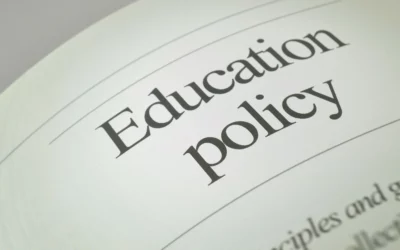
Written by Derek Monson, W. Brad Wilcox and David Bass
September 18, 2023
Originally published in Deseret News.
Utah was just acknowledged by WalletHub as the happiest state in the nation, and it’s no secret that Utah leads many state performance rankings in America. From the economy — including growth, a favorable business climate, work environment and economic mobility — to life satisfaction, Beehive State residents enjoy enviable levels of success.
What’s the key to Utah’s prosperity and emotional happiness? Research shows that the family factor is a big part of what some have described as “the Utah Miracle.” Strong families make for thriving communities of men, women and children across the state.
Yet despite the fact that robust families are a big reason why the Beehive State flourishes on so many fronts, many state agencies reporting data to decision-makers fail to include key marriage and family metrics.
This is concerning because Utah’s family strengths have witnessed some erosion in recent years, following the general trends in the nation at large. In other words, policymakers may not be getting the full story regarding the state’s future challenges and the resources needed to meet those challenges.
Data from Pew Research Center shows that a record-high 25% of 40-year-olds in the United States were never married as of 2021, compared to about 5% in 1980. In Utah, the marriage rate has fallen more than 15% since 2012 alone. And today, this erosion is most pronounced among the least privileged Utahns — children in less-educated and lower-income homes across the state are more likely to be raised in single-parent homes than their peers in more educated and affluent homes.
What we are seeing play out in Utah, as with America as a whole, is that the family is most fragile among those who can least afford it.
These trends take on a particular meaning in light of an important new book released this week, “The Two-Parent Privilege: How Americans Stopped Getting Married and Started Falling Behind,” by Brookings Institution economist Melissa Kearney. Her pathbreaking book underlines four important “realities” facing the nation and Utah:
- “Two-parent families are beneficial for children.”
- “The class divide in marriage and family structure has exacerbated inequality and class gaps.”
- “Places that have more two-parent families have higher rates of upward mobility.”
- “Not talking about these facts is counterproductive.”
Kearney further argues that if we do not act to bridge the growing class divide in American family life and revive the fortunes of marriage, “our class gaps will widen, social mobility will erode, and the social cohesion of our country will be further undermined.”
In light of this important new entry to our national family conversation, let’s take a look at one state entity — the State Board of Education — as well as the science on family and education. This will help us understand why Utah should collect key marriage and family metrics to spotlight the ways in which strong families make for a successful state.
Research indicates that a key predictor of student educational performance is the share of married parents. The percentage of married two-parent families is associated with a larger percentage of students graduating from high school in states across the union, according to research by Brad Wilcox at the University of Virginia, Joseph Price at BYU and Robert Lerman at the Urban Institute.
And when it comes to a school’s climate, research on family and education indicates that children from stable, intact, two-parent married families are more likely to avoid behavioral problems in school because they usually benefit from greater income, greater attention and more structure when they have the benefit of two married parents at home. The importance of a stable family for school performance is especially important for boys, as UCLA economist Melanie Wasserman has shown in her research “The Disparate Effects of Family Structure.”
In Utah, studies show that students in school districts across the state with more married parents are more likely to graduate high school. The association between family structure in a community and education outcomes is not surprising given Raj Chetty and Nathaniel Hendren’s finding that a community’s share of two-parent families is connected with better economic outcomes for low-income children. In fact, one reason that Utah does so well in giving poor children in the state a shot at the American dream is that its communities have more two-parent families than other states in the nation. What is true of economic mobility seems to also apply to academic performance: Family stability in the community matters.
Clearly, family patterns are tied to the success not only of individual students but whole school districts across Utah. Accordingly, data on marriage and family should be tracked and reported by state education officials to inform wise policy decisions and course corrections moving forward.
Why? Because despite the good news that Utah gets more bang for its buck in education than most states — with lower spending on public education than the average U.S. state and higher-than-average high school graduation rates and relatively strong ACT scores in English, reading, math and science (compared to other states who test 100% of their students) — the state does face educational challenges.
Today, two challenges are especially noteworthy: Persistent gaps between less- and more-privileged children mark student performance, and too many students are not performing at levels considered proficient or better on the English, math and science tests used in the state. Considering the research, it is likely that part of these outcomes are rooted in challenges on the home front.
But right now, the State Board of Education and school districts are not collecting family data so that decision-makers can understand this facet of the state’s educational challenges. The most likely result of this information problem is a misunderstanding of the ways in which family challenges are implicated in educational problems facing the state’s children and, by extension, policy solutions that do not fully address the family factor. This lack of knowledge can and should be remedied by the State Board of Education — or, if necessary, by the Utah Legislature.
To maintain Utah’s educational — and economic — success, we recommend that state agencies analyze and report key outcomes and inputs by marriage and family structure. So, the Utah State Board of Education should report out student outcomes not just by race, gender, ethnicity, language ability, disability status and income, but also family structure.
This type of data reporting is needed in more areas than just education. Lawmakers should be getting regular reports on how family structure is linked to physical and emotional health, poverty, criminal justice outcomes and labor force attachment of Utah residents — as well as the ways in which tax revenues are linked to the family structures of taxpayers.
Utah has enjoyed exceptional success in recent decades, in large part because the state enjoys unusually strong and stable families. Since good policy depends on good information, Utah should measure how family dynamics are tied to state outcomes across agencies. This will enable policymakers and other stakeholders across the state — parents, schools, religious, civic and business leaders and the press — to determine how families are influencing key areas of life in Utah. This, in turn, will increase understanding of the unique ways that factors such as race, gender and economic status impact important issues in Utah.
This effort, of course, is especially important in a day and age when the least among us have greater difficulty accessing that which matters most, even in Utah: a strong family.
More Insights
Read More
Looking at Supreme Court and religious freedom through the lens of the presidential campaign
Two constitutional issues highlight similarities and differences between the Biden and Trump administrations.
Education policy to consider during the 2024 election season
Here’s a look at what each presidential candidate is likely to focus on in education, given their track records and campaign platforms.
Ignoring the text of the Constitution is a mistake
A written Constitution is entirely superfluous if the document is simply meant to give the people what they want.


